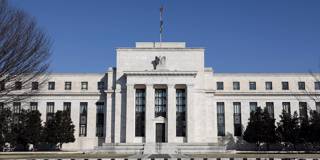OnPoint Subscriber Exclusive
Global Bookmark offers long-form examinations of global trends and challenges, viewed through the lens of important new books.

The Contested Fed
The US Federal Reserve is a monument to the idea that the market, if left on its own, will destroy everything in its path, including itself. Three recent books suggest that the Fed has the capacity to function as a device of indicative planning, coordinating economic activities to fulfill democratically determined social purposes.
Edward Chancellor, The Price of Time: The Real Story of Interest, Atlantic Monthly Press, 2022.
Lev Menand, The Fed Unbound: Central Banking in a Time of Crisis, Columbia Global Reports, 2022.
NEW YORK – By now you’ve probably heard of collateralized debt obligations, quantitative easing, helicopter drops, shadow banking, hedge funds, private equity, leveraged buyouts, asset pricing, cryptocurrencies, and so on. You may not be able to explain them all – to be honest, few can – but you know that they are somehow associated with central banking or high finance. Maybe you’ve also figured out the difference between fiscal and monetary policy, discretionary and otherwise. Quite possibly you can name the people who propose and enact such policy, like the current Federal Reserve chair, Jerome Powell, and his immediate predecessors, Janet Yellen, Ben Bernanke, and Alan Greenspan.